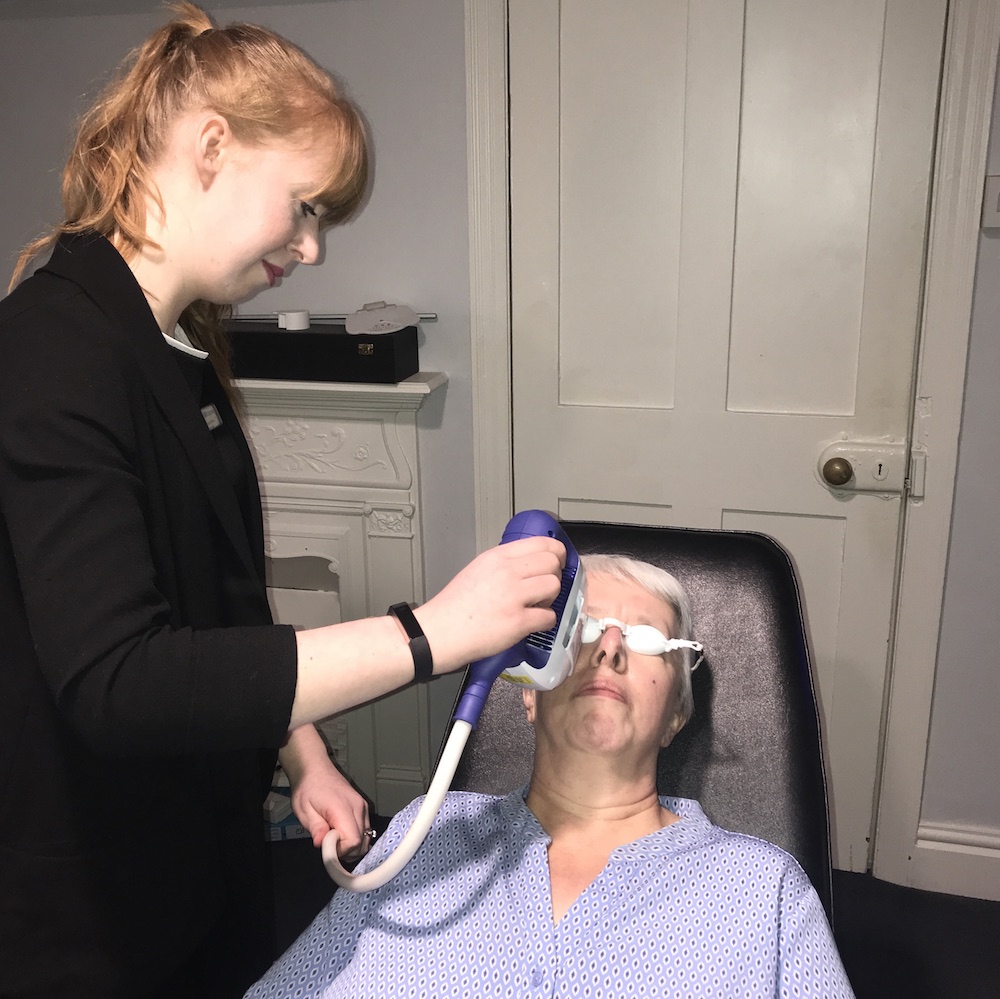One of our optometrists, Laura Williams, who specialises in contact lenses and dry eye was approached to carry out a study using an Intense Regulated Pulsated Light (IRPL®) device called E-Eye on 10 patients (contact lens wearers and non-contact lens wearers), running between October and December 2018.
There are five sites across the UK taking part in this study, and Nick Rumney will be presenting the initial data for the Scottish Optical Congress on 25th November.

The results will hope to ascertain which group of patients gain more improvement in their Meibomain Gland Dysfunction (Evaporative Dry Eye) with treatment based on baseline data.
For the study, all 10 patients are required to have an initial consultation to judge suitability.
Once this has been done, they are scheduled for 3x E-Eye treatments at Day 1, 15, 45 followed by a review to measure differences in meibomian gland structure and expressibility, ocular surface health, as well as self-reported improvement in symptoms.
What is Meibomian Gland Dysfunction (MGD)?
Dry eye is a common pathology affecting between 5 and 15% of the population. Your tear film is made up of 3 layers:
1) Mucin layer – adheres tears to the eye
2) Aqueous (water) layer –nourishes and protects the cornea (window of the eye)
3) Lipid (Oil) layer – lubricates and prevents evaporation
There can be either an insufficient production of tears or they can evaporative from the cornea (window of your eye) too quickly. Evaporative dry eye accounts for a high percentage of ocular dryness (80%).
When there is a deficiency in the lipid layer, which is secreted by the meibomian glands this leads to symptoms of discomfort, burning, grittiness and inflammation (redness) around the eyes.
What is E-Eye?
E-Eye is a device used for the treatment of evaporative dry eye. The IRPL® generates a sequence of exact light pulses which stimulates the meibomian glands to produce their own natural, healthy tears. As the normal structure of the tear film is restored, symptoms of ocular dryness will be significantly reduced. The procedure is non-invasive, painless and only takes a few minutes.
How does it work?
You may have heard of something similar used by dermatologists for the treatment of conditions such as rosacea. E-Eye uses a lower energy light for tthe reatment of MGD.
The treatment is applied at five locations along the lower eyelid. It acts on the parasympathetic nervous system to stimulate or re-boot the meibomian glands – think of it as a turning a computer on and off! Patients will require a series of 3-4 treatments to ensure the treatment’s effectiveness.
Additional sessions may be required for maintenance of ocular comfort. The benefit to the patient can last 6 months – 2 years following treatment.
Tear Clinic @ BBR
If you feel you would benefit from this treatment or are experiencing any symptoms of ocular discomfort, we provide a range of dry eye treatments at our specialised Tear Clinic. Please get in contact with us or email enquiries@bbroptometry.co.uk and we can send you some more information.
Photo: BBR optometrist Laura Williams using the E-Eye device on a patient